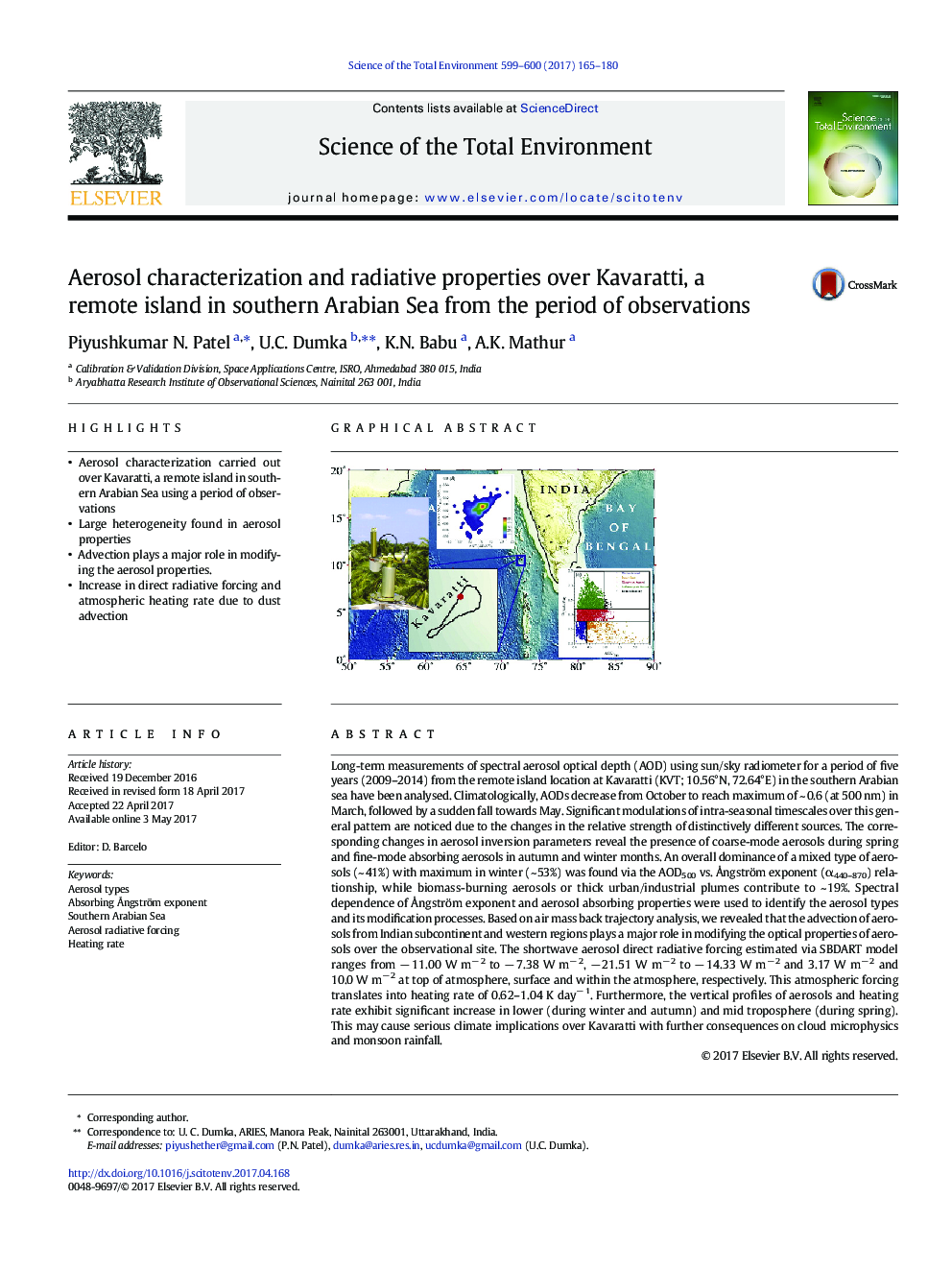| کد مقاله | کد نشریه | سال انتشار | مقاله انگلیسی | نسخه تمام متن |
|---|---|---|---|---|
| 5750481 | 1619698 | 2017 | 16 صفحه PDF | دانلود رایگان |

- Aerosol characterization carried out over Kavaratti, a remote island in southern Arabian Sea using a period of observations
- Large heterogeneity found in aerosol properties
- Advection plays a major role in modifying the aerosol properties.
- Increase in direct radiative forcing and atmospheric heating rate due to dust advection
Long-term measurements of spectral aerosol optical depth (AOD) using sun/sky radiometer for a period of five years (2009-2014) from the remote island location at Kavaratti (KVT; 10.56°N, 72.64°E) in the southern Arabian sea have been analysed. Climatologically, AODs decrease from October to reach maximum of ~ 0.6 (at 500 nm) in March, followed by a sudden fall towards May. Significant modulations of intra-seasonal timescales over this general pattern are noticed due to the changes in the relative strength of distinctively different sources. The corresponding changes in aerosol inversion parameters reveal the presence of coarse-mode aerosols during spring and fine-mode absorbing aerosols in autumn and winter months. An overall dominance of a mixed type of aerosols (~ 41%) with maximum in winter (~ 53%) was found via the AOD500 vs. à ngström exponent (α440-870) relationship, while biomass-burning aerosols or thick urban/industrial plumes contribute to ~ 19%. Spectral dependence of à ngström exponent and aerosol absorbing properties were used to identify the aerosol types and its modification processes. Based on air mass back trajectory analysis, we revealed that the advection of aerosols from Indian subcontinent and western regions plays a major role in modifying the optical properties of aerosols over the observational site. The shortwave aerosol direct radiative forcing estimated via SBDART model ranges from â 11.00 W mâ 2 to â 7.38 W mâ 2, â 21.51 W mâ 2 to â 14.33 W mâ 2 and 3.17 W mâ 2 and 10.0 W mâ 2 at top of atmosphere, surface and within the atmosphere, respectively. This atmospheric forcing translates into heating rate of 0.62-1.04 K dayâ 1. Furthermore, the vertical profiles of aerosols and heating rate exhibit significant increase in lower (during winter and autumn) and mid troposphere (during spring). This may cause serious climate implications over Kavaratti with further consequences on cloud microphysics and monsoon rainfall.
212
Journal: Science of The Total Environment - Volumes 599â600, 1 December 2017, Pages 165-180